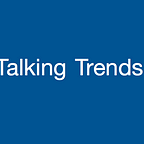The New Supply Chain - in conversation with Velma Deleveaux
“Supply chain is like nature; it is all around us.”
Supply chain — a facet that has always existed in every business, but has been brought to the forefront with the onset of the pandemic. By streamlining and coordinating the supply and demand side of service to maximize customer experience, a company can build a major competitive advantage in the market. The supply chain has always been crucial, but the threats posed to it during the pandemic have allowed industries to realize its immense value.
Today we are in conversation with Velma Deleveaux, independent board director, corporate leader, supply chain expert. Velma shares with us her take on the new supply chain and how companies can combat the new set of complex issues that come with it.
Velma, what is the supply chain of the future and how do you prepare companies for it? Where traditional supply chain problems are about logistics, nowadays it’s more about how threats (cyber, terrorists, pandemic, etc.) impact the supply chain. Tell us more about that.
“Supply chain risk management has always been an important discipline. However, it has severely changed in nature over the past year, due to the pandemic. With the scarcity of computer chips, increasing prices of cars, labor shortages, cyber-attacks, and so on, protecting supply chains has become crucial. Preparing for these complex novel threats is now key — before which our focus was on keeping costs low, managing inventories across suppliers, and ensuring that we can meet customer demands promptly. We now face a complex set of challenges, and hence old methods of thinking that we need to alter.
“There is increased awareness, yet, old operational norms persist. Board directors and executives focus on high probability/ high impact occurrences but do not always sufficiently prepare for low probability/high impact occurrences. Inadequate preparation for such threats can prove to be harmful. Another shortcoming is not enough to focus on training the workforce on cultural issues. It is difficult for employees to forge partnerships and share resources and information with suppliers if we continue to work in silos. Further, lack of common operating procedures, language, and framework to prioritize challenges and model potential impact, all become threats.
“There are multiple companies, academics, consulting firms, and government entities working on the supply chain risk problem. Our government is working with industry partners to identify various threats and scenarios. They are providing insights and guidance about the current (and future) vulnerabilities, risks, and suggested mitigation strategies across various industry sectors.
“Given the complex nature of the supply chain risk problem we need new thinking, new frameworks, and tools to help address these challenges. To identify specific threats, we must identify 2nd, 3rd, and 4th tier suppliers, since a lot of the threats existing there. Many companies have also started using analytics to identify threats but may not have the tools needed to help make tradeoffs regarding investing time and resources. Another potential method could be to use simulations to identify gaps in response and further devise solutions.”
Thank you for sharing, Velma.
